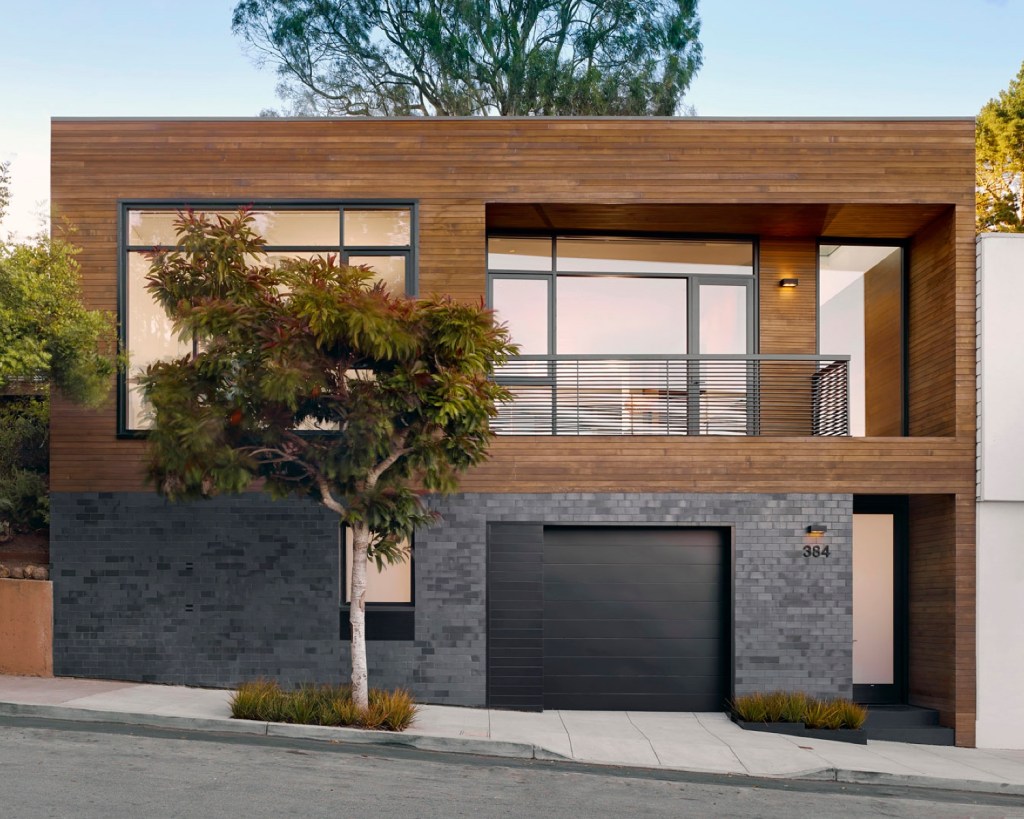Two design ideas resonated with the judges when it came to this project—its sense of cohesion and its engagement with the surrounding property. “It’s so difficult to take a structure and have it become a cohesive voice of something new. You’re always fighting other things to … have a singular vision,” they said. “The [original] house didn’t seem to acknowledge the slope. The new one acknowledges and emphasizes the hill.” That’s the essence of why this small San Francisco home is the 2015 Project of the Year award winner.
The 1930s stucco bungalow “had no particular character,” says architect Cary Bernstein, who was asked to expand the 1,100-square foot house within its compact footprint.
To keep within the clients’ budget and the urban neighborhood’s scale, Bernstein chose not to go up but rather to find space by pushing the house out to the side property lines and 7 feet back in the rear. Contractor Felix Chan, owner of Lara Construction, demolished the house to the first floor and then reframed it from there.
Atypical Sequencing
Because the lot is fairly wide (at least for San Francisco) at 40 feet, it made more sense to demolish the house, then have Surface Design do the landscaping before the build. “It was much easier bringing in the dirt without the house being in the way,” Bernstein says. “They even brought in some of the bigger plants.” Only then did Chan’s crew begin the construction. (Other landscaping features, such as the fences and wood structures were installed later.)
The result is part of what makes the house seem cohesive. “[There was] a strong sense of connection from day one,” Bernstein says. “The fluidity of how the house relates to the landscape was a collaboration.”
Step Beyond
The original house was living space over a garage with an external staircase. Bernstein kept that configuration but captured the stairs inside. Doing this, she says, “helped to add a sense of spaciousness in the living room because it added air and volume without changing the footprint.”
Gaining space in the back meant the team would have to create a retaining wall close to the kitchen windows because the hill is so steep. Bernstein’s solution: a step up within the house, which helps mitigate the retaining wall and give spatial configuration to the open floor plan. The step also “contributes to the idea of this project,” Bernstein says. “You’re always traversing the hill on the inside and outside of the house. It has a practical and a metaphorical purpose, which is the way we like to view our architecture.”
The house, now 1,800 square feet, is still modest. To increase the feeling of spaciousness, Bernstein raised the ceiling from 8 to 10 feet and specified large windows, five skylights and three clerestory windows. “Almost every room has two sources of light, which makes the smaller spaces feel larger because they’re ‘active’ with changes in daylight,” she says.
All Together Now
The cohesion that so struck the judges is by design. They remarked on Bernstein’s control, noting that “the composition considers everything, down to the detail of lighting and the furniture. That’s what makes it so strong.” Bernstein acknowledges that although the transformative quality of the project was important, “the landscape and the décor were all of a piece conceptually. For a renovation project that doesn’t always happen.”
Bernstein’s ultimate goal was to solve a problem of urban living in a compact footprint: “This is a very deliberative, qualitative experience. It’s not about having the biggest house and extra stuff. It was about having the right house.” In this case, the right house took the top honors.
See more photos of the project and all the winners of the 2015 Remodeling Design Awards.
